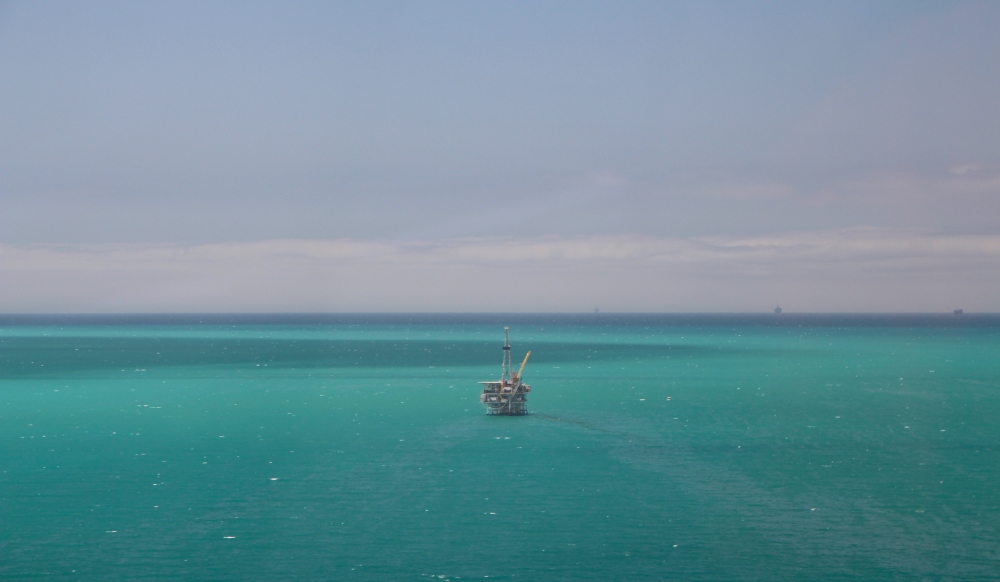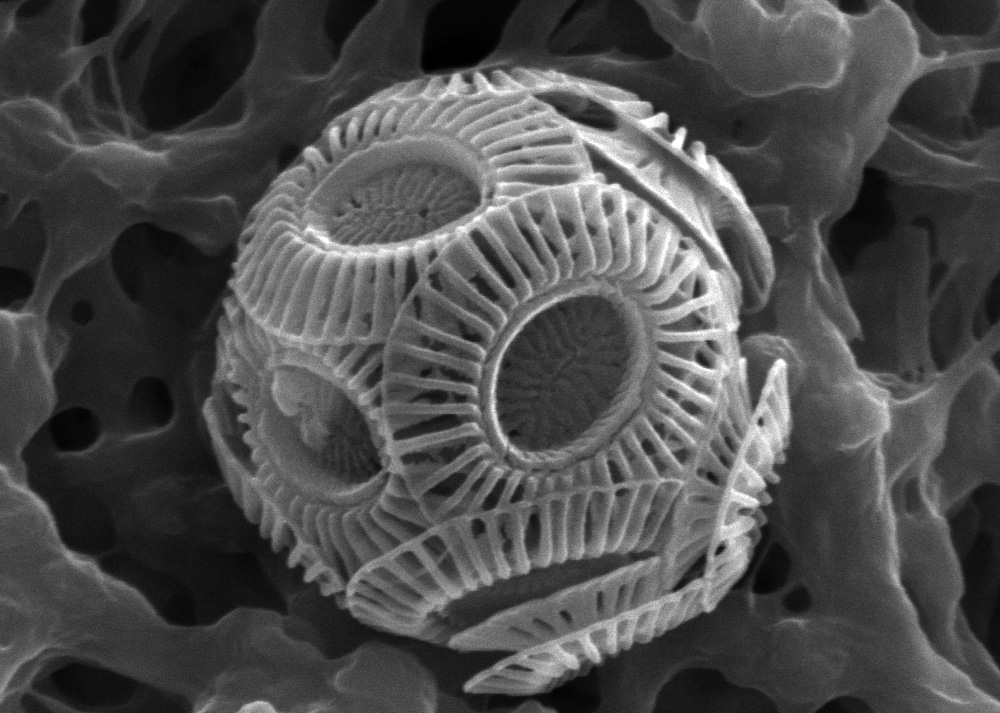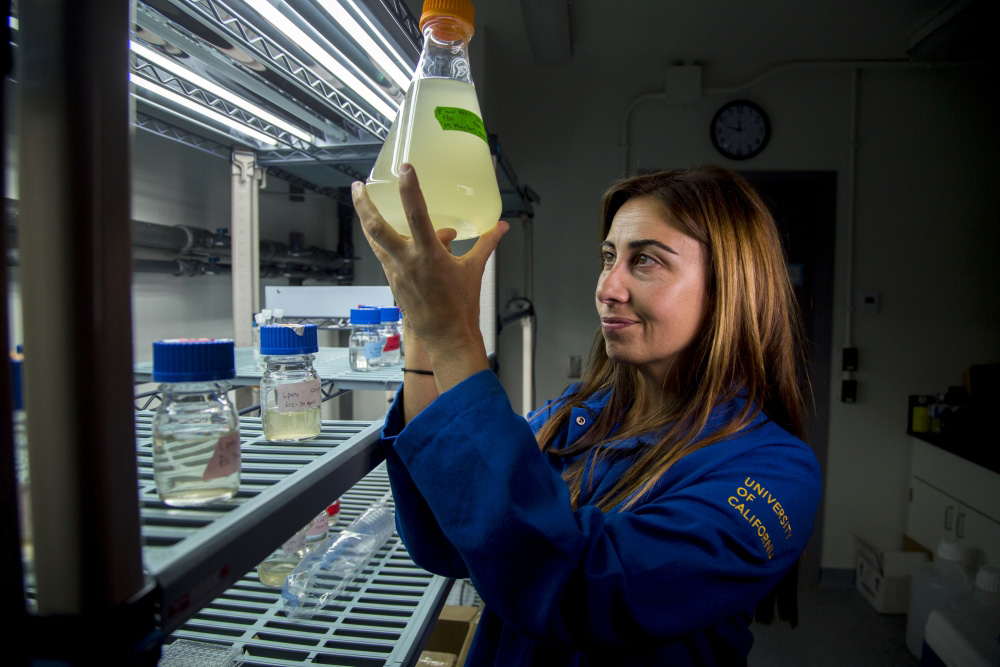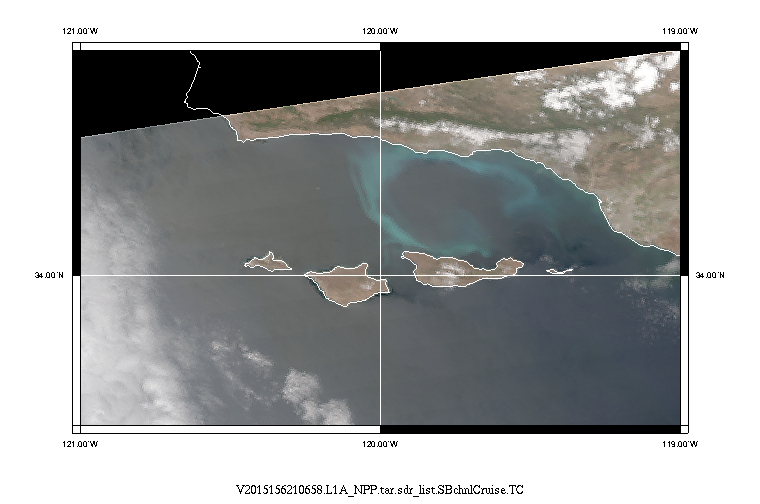The following is an article by Julie Cohen, written for The UCSB Current and posted June 5, 2015, with the title “In Living Color”:
Over the last few days, the waters off the Santa Barbara coast have turned a striking shade of turquoise. The mystery behind this unusual color change is a type of chalk-producing phytoplanktonic organism called a coccolithophore.
But what makes these otherwise invisible life forms suddenly visible? It’s their sudden abundance. When coccolithophores are numerous, they turn the ocean surface turquoise-white and can easily be seen via satellite.
“Coccolithophores make chalk — calcium carbonate — internally in the organelles within the cell, and they push it outside the cell membrane,” said biological oceanographer Debora Iglesias-Rodriguez, a professor in UCSB’s Department of Ecology, Evolution and Marine Biology. “They contain a material that glues the chalk plates to the membrane of the cell, and as they make more, they shed the plates so we get these white tides.”
Iglesias-Rodriguez has been studying coccolithophores for the past two decades and her team has been trying to understand the environmental conditions controlling their distribution and abundance in the Santa Barbara Channel. Researchers in her lab are currently sampling in the field and conducting experiments in the laboratory to determine why these milky waters have appeared just now. “This is a big bloom,” said Iglesias-Rodriguez. “Typically blooms are associated with high stability. When the waters are calm, they bloom, but it has nothing to do with temperature.”
The researchers have found diverse coccolithophore populations present through the year, but on June 4 — coincidental with the observation of turquoise waters — they identified a huge bloom in the channel. Paul Matson, a postdoctoral scientist in Iglesias-Rodriguez’s lab, counted 5 million cells of coccolithophores in 1 liter of seawater. In addition to Matson, Tanika Ladd, a graduate student in the lab will conduct experiments in the next few months to shed light on whether the sudden outbreak of coccolithophores is linked in any way to the recent oil spill north of Refugio State Beach.
According to Iglesias-Rodriguez, coccolithophores are hugely important. As microscopic plants they photosynthesize, but they also absorb carbon dissolved in seawater and convert it into hard plates called coccoliths. These plates are made up of calcium carbonate, similar to clam and oyster shells and the same material that forms the white cliffs of Dover in the English Channel. This biological process, she noted, represents one of the most important mechanisms by which the Earth locks carbon into solid material, some of which ends up in the seafloor.
“The beauty of all this is that it’s a very efficient way in the long term of sequestering carbon in planetary terms,” Iglesias-Rodriguez said. “So this bloom is a big deal and a great way to learn more about these amazing plants.”
Editor’s note: Many thanks to Geography Professor Keith Clarke for suggesting this material.






